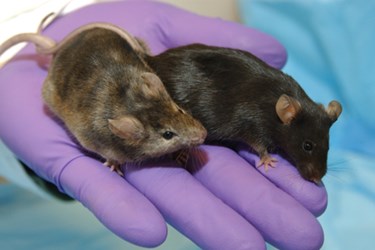Researchers Regenerate A Living Organ For The First Time
By Joel Lindsey

A team of scientists at the University of Edinburgh, in Scotland, successfully regenerated a living organ for the very first time — an accomplishment that could prove groundbreaking in the field of tissue regeneration.
“One of the key goals in regenerative medicine is harnessing the body’s own repair mechanisms and manipulating these in a controlled way to treat disease,” Dr. Rob Buckle, head of regenerative medicine at the UK’s Medical Research Council (MRC), said in the University of Edinburgh press release. “This interesting study suggests that organ regeneration in a mammal can be directed by manipulation of a single protein, which is likely to have broad implications for other areas of regenerative biology.”
For the research project, results of which were published in the journal Development, scientists rebuilt the thymus organs of old mice. The thymus is an integral part of the immune system, as it produces T cells, which are vital, infection-fighting white blood cells. By singling out and manipulating the protein FOXN1, researchers were able to successfully rejuvenate the aging organs so that they began functioning like younger organs again.
While initial research indicates that the regeneration successfully brought the organs back into working condition, it is still unclear whether or not the regenerated organs will be capable of strengthening the mice’s overall immune systems.
The thymus works similarly in both humans and mice, so there may be potential medical applications for the technique.
“Our results suggest that targeting the same pathway in humans may improve thymus function and therefore boost immunity in elderly patients, or those with a suppressed immune system,” said Clare Blackburn, professor of tissue stem cell biology at the MRC’s Centre for Regenerative Medicine, in a recent article published by The Guardian. “However, before we test this in humans we need to carry out more work to make sure the process can be tightly controlled.”
Tissue regeneration continues to be an active and growing field, as researchers work to identify new techniques for rebuilding various types of human tissue.
In other recent studies, for example, researchers in the US and Switzerland were able to use patient cells to grow new genital tissue as well as nose tissue, according to an article published by Forbes.
Researchers at Wake Forest Baptist Medical Center in North Carolina regenerated vaginal tissue for patients affected by Mayer-Rokitansky-Küster-Hauser (MRKH) syndrome, a rare genetic condition that leaves the vagina and uterus wholly or partially unformed.
Similarly, researchers at the University of Basel in Switzerland used nose cartilage samples to grow new nose tissue for patients who had lost parts of their noses due to skin cancer.
Image Credit: Maggie Bartlett, NHGRI.
